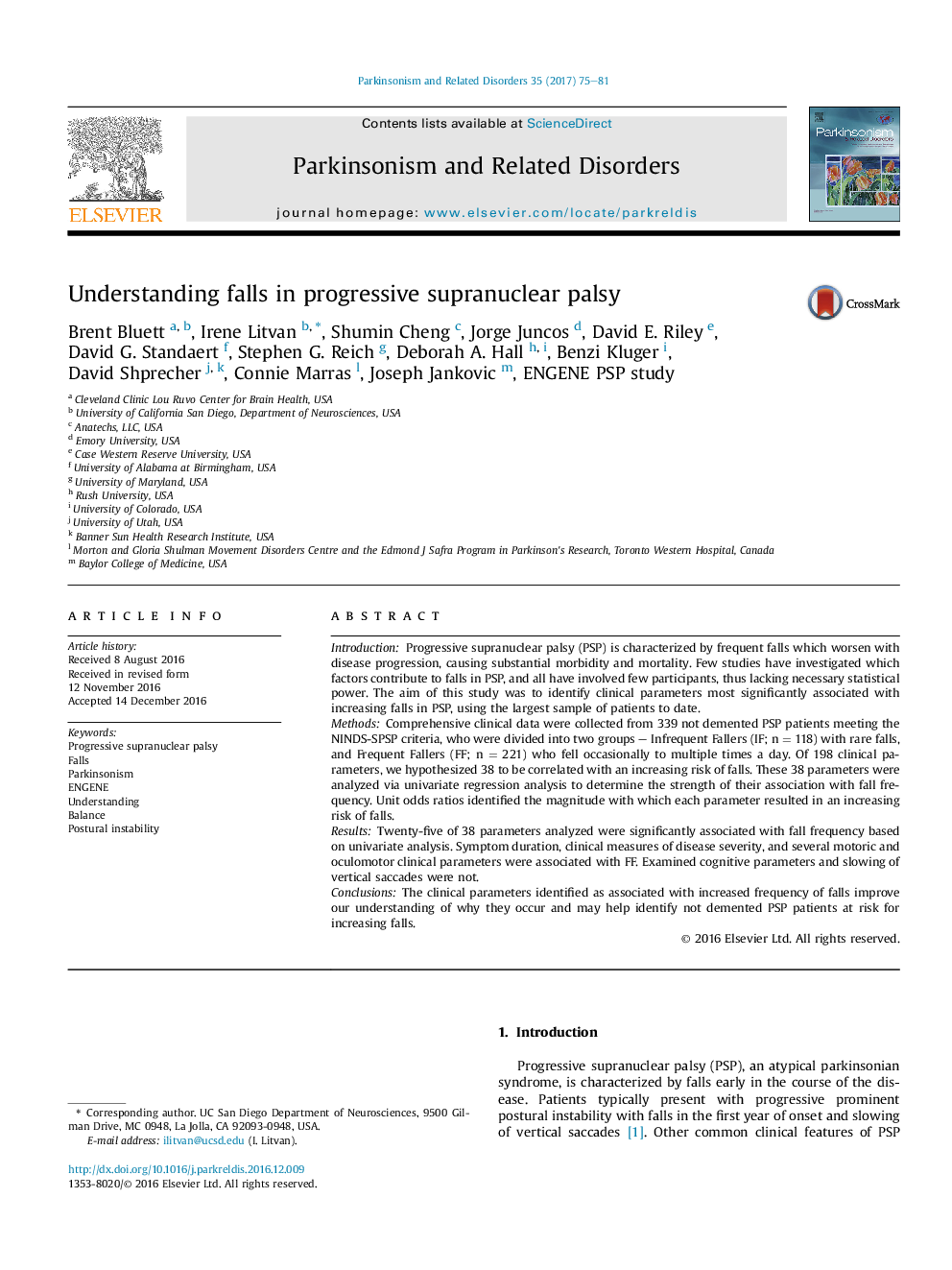| کد مقاله | کد نشریه | سال انتشار | مقاله انگلیسی | نسخه تمام متن |
|---|---|---|---|---|
| 5503825 | 1535814 | 2017 | 7 صفحه PDF | دانلود رایگان |
- Identified parameters provide insight into the pathophysiology of falls in PSP.
- Clinical indicators of later disease assist in identification of frequent fallers.
- Analyzed cognitive parameters did not correlate with increasing falls.
- Clinical evaluation of ability to turn may help identify frequent fallers.
IntroductionProgressive supranuclear palsy (PSP) is characterized by frequent falls which worsen with disease progression, causing substantial morbidity and mortality. Few studies have investigated which factors contribute to falls in PSP, and all have involved few participants, thus lacking necessary statistical power. The aim of this study was to identify clinical parameters most significantly associated with increasing falls in PSP, using the largest sample of patients to date.MethodsComprehensive clinical data were collected from 339 not demented PSP patients meeting the NINDS-SPSP criteria, who were divided into two groups - Infrequent Fallers (IF; n = 118) with rare falls, and Frequent Fallers (FF; n = 221) who fell occasionally to multiple times a day. Of 198 clinical parameters, we hypothesized 38 to be correlated with an increasing risk of falls. These 38 parameters were analyzed via univariate regression analysis to determine the strength of their association with fall frequency. Unit odds ratios identified the magnitude with which each parameter resulted in an increasing risk of falls.ResultsTwenty-five of 38 parameters analyzed were significantly associated with fall frequency based on univariate analysis. Symptom duration, clinical measures of disease severity, and several motoric and oculomotor clinical parameters were associated with FF. Examined cognitive parameters and slowing of vertical saccades were not.ConclusionsThe clinical parameters identified as associated with increased frequency of falls improve our understanding of why they occur and may help identify not demented PSP patients at risk for increasing falls.
Journal: Parkinsonism & Related Disorders - Volume 35, February 2017, Pages 75-81
